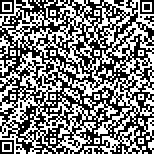| 引用本文: |
-
张思,牛芳琳,于玲,张永祥.基于部分信息的SLT-LT联合码防窃听方案设计[J].信息安全学报,2024,9(3):113-123 [点击复制]
- ZHANG Si,NIU Fanglin,YU Ling,ZHANG Yongxiang.Design of SLT-LT Joint Code Anti-eavesdropping Scheme Based on Partial Information[J].Journal of Cyber Security,2024,9(3):113-123 [点击复制]
|
|
| |
|
|
| 本文已被:浏览 1210次 下载 1122次 |

码上扫一扫! |
| 基于部分信息的SLT-LT联合码防窃听方案设计 |
|
张思, 牛芳琳, 于玲, 张永祥
|
|
|
| (辽宁工业大学电子与信息工程学院 锦州 中国 121001) |
|
| 摘要: |
| 近年来, 信息的安全传输备受人们关注, 现有的物理层安全技术从信息论的角度出发, 将物理层安全编码与传输信道的动态物理特性进行结合, 实现信息的保密传输。作为一种纠删码, LT(Luby transform)码由于其编码随机性、码率不固定等特性,使得窃听者不能直接从泄露的编码符号中得到有用信息, 只要合法用户在窃听者之前接收到足够数量的编码符号, 便可实现信息的安全传输。而作为一种转移 LT(Shifted LT, SLT)码, SLT 码能高效恢复信息的同时具有更小的译码开销。因此, 我们将 SLT码应用于 Wyner 降阶窃听信道模型进行研究, 提出一种基于部分信息转移的 SLT-LT 联合码防窃听方案, 信源利用接收者已知的部分信息对度分布进行调整, 并对信源符号进行 SLT-LT 码级联编码。由于窃听信道是合法信道的降阶信道, 因此外在的窃听者截获到的消息符号是合法接收者的降阶版本, 在相同时间内, 合法接收者能够收到更多消息符号, 随着编解码过程的不断进行, 合法接收者的优势不断累积, 能够优先完成解码, 而度分布的调整以及级联编码方案使得编码符号的平均度进一步增大,窃听者难以完成解码, 进一步降低了窃听者译出率; 之后, 对所提方案的编解码性能以及安全性进行理论分析, 并通过实验仿真进行验证, 仿真结果表明, 与其他防窃听 LT 方案相比, 本文所提方案仅增加少量的译码开销但具有更好的安全性能。 |
| 关键词: 喷泉码 部分信息转移 级联码 防窃听 物理层安全 |
| DOI:10.19363/J.cnki.cn10-1380/tn.2024.05.08 |
| 投稿时间:2022-06-08修订日期:2022-07-27 |
| 基金项目: |
|
| Design of SLT-LT Joint Code Anti-eavesdropping Scheme Based on Partial Information |
|
ZHANG Si, NIU Fanglin, YU Ling, ZHANG Yongxiang
|
| (School of Electronics and Information Engineering, Liaoning University of Technology, Jinzhou 121001, China) |
| Abstract: |
| In recent years, the security of information transmission has attracted much attention. From the perspective of information theory, the existing physical layer security technology combines the physical layer security coding with the dynamic physical characteristics of the transmission channel to realize the secure transmission of information. As a kind of erasure code, Luby transform (LT) code has the characteristics of random coding and rateless, therefore, eavesdroppers cannot directly obtain useful information from leaked code symbols. As long as a legitimate user receives a sufficient number of encoded symbols before an eavesdropper, the secure transmission of information can be achieved. As a shifted LT (SLT) code, the SLT codes can efficiently recover information, with a smaller decoding overhead. Therefore, we apply the SLT code to the Wyner degenerate eavesdropping channel model for research, and propose a SLT-LT joint code anti-eavesdropping scheme based on partial information transfer. The source adjusts the degree distribution using partial information known to the receiver, and performs SLT-LT concatenated coding on the source symbols. Since the eavesdropping channel is a degenerate channel of the legitimate channel, the message symbols intercepted by the external eavesdropper are degenerate versions of the legitimate receiver, and the legitimate receiver can receive more message symbols in the same time. As the encoding and decoding process progresses, the advantages of legitimate receivers continue to accumulate, and the decoding can be completed preferentially. In addition, the adjustment of the degree distribution and the concatenated coding scheme further increase the average degree of the coded symbols, making it difficult for an eavesdropper to complete decoding, further reducing the eavesdropper's decoding rate. After that, the encoding and decoding performance and security of the proposed scheme are theoretically analyzed and verified by experimental simulation. The simulation results show that, compared with other anti-eavesdropping LT schemes, the proposed scheme only adds a small amount of decoding overhead but has better security performance. |
| Key words: fountain code partial information transfer concatenated code anti-eavesdropping physical layer security |
|
|
|
|
|